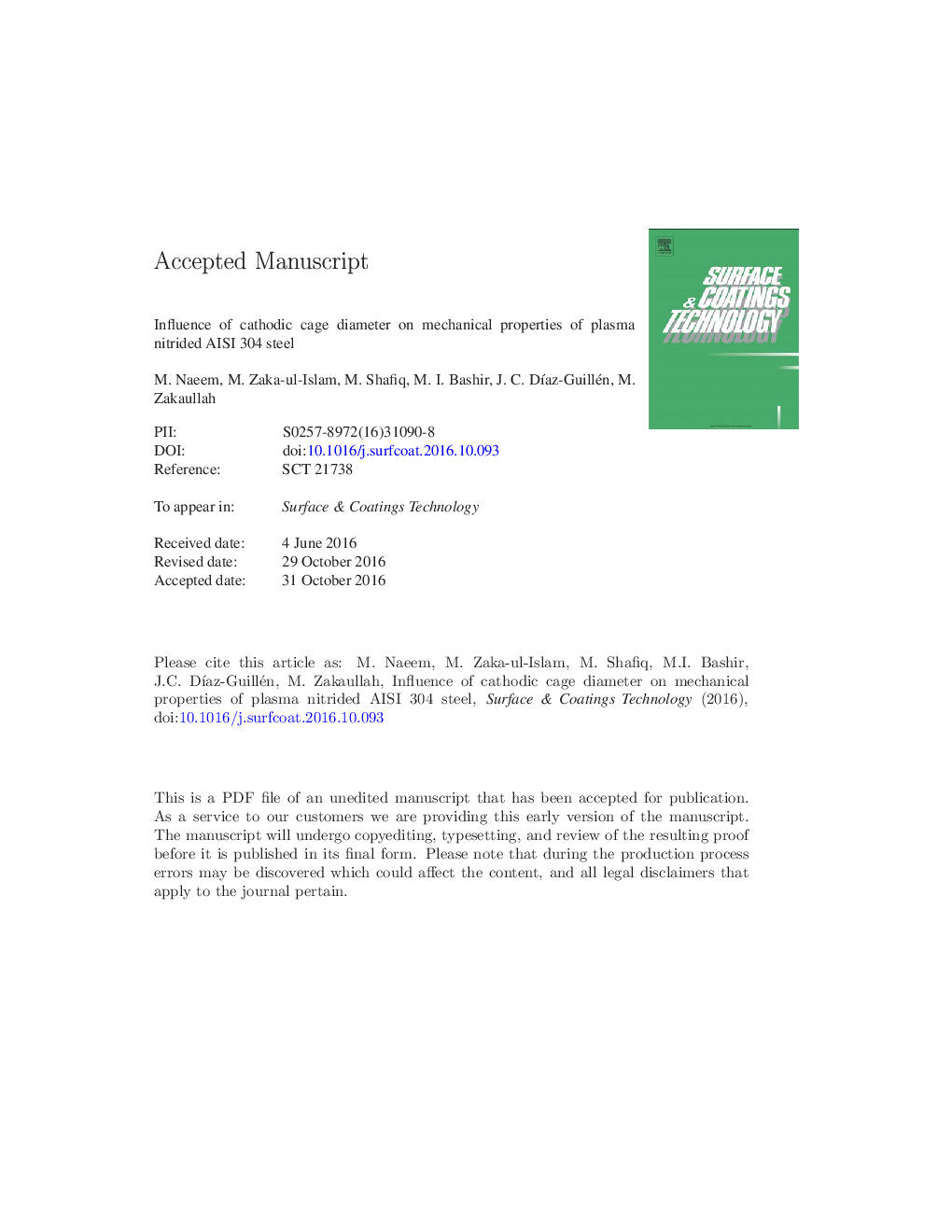| Article ID | Journal | Published Year | Pages | File Type |
|---|---|---|---|---|
| 5465315 | Surface and Coatings Technology | 2017 | 31 Pages |
Abstract
Cathodic cage plasma nitriding (CCPN) is an advanced technique for the enhancement of the surface chemical and mechanical properties of steels. In this process, the cathodic cage (CC) is of central importance since it influences the temperature distribution over the specimen as well as the electron's generation and their confinement. The diameter of the CC is usually arbitrarily chosen, and its influence on nitriding performance has not been investigated systematically. In this report, we have investigated the influence of the CC diameter on the surface properties of nitrided AISI 304 specimens. The specimens are processed using various diameters of CC (13-21 cm), at fixed substrate temperature, pressure, and treatment time. It is observed that the CC diameter is an important parameter, and it influences the plasma kinetics as well as the surface characteristics of treated samples. The reduction of the CC diameter changes the crystalline phases from expanded austenite (S) to iron nitrides Fe2 â 3N , Fe4N, (without chromium nitrides precipitates), while the surface hardness, wear resistance and corrosion resistance are significantly improved. The results also show a positive correlation with optical emission from the plasma and SRIM simulation. This study clarifies the role of the CC diameter on mechanical, corrosion and tribological properties of austenite steels.
Related Topics
Physical Sciences and Engineering
Materials Science
Nanotechnology
Authors
M. Naeem, M. Zaka-ul-Islam, M. Shafiq, M.I. Bashir, J.C. DÃaz-Guillén, M. Zakaullah,
